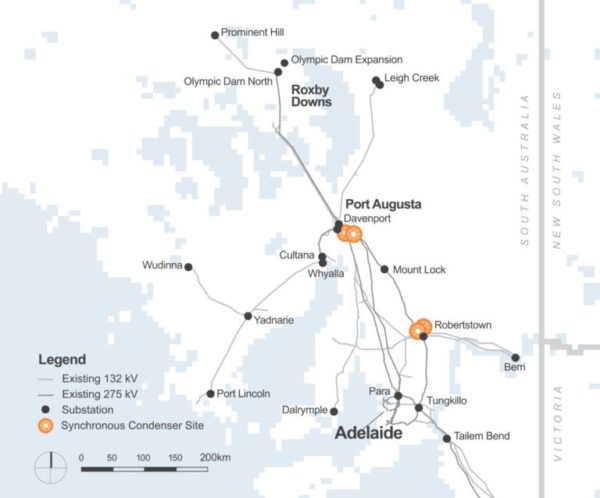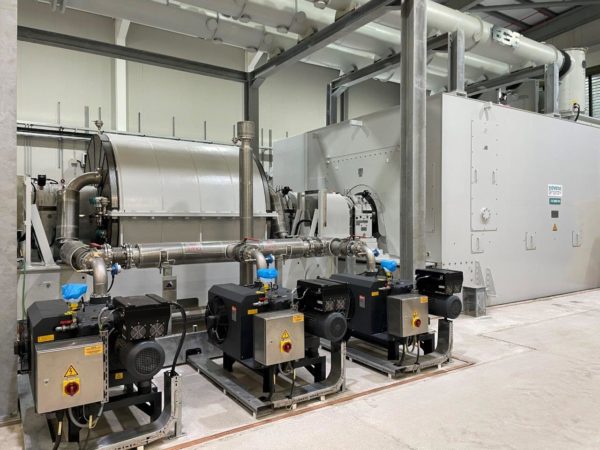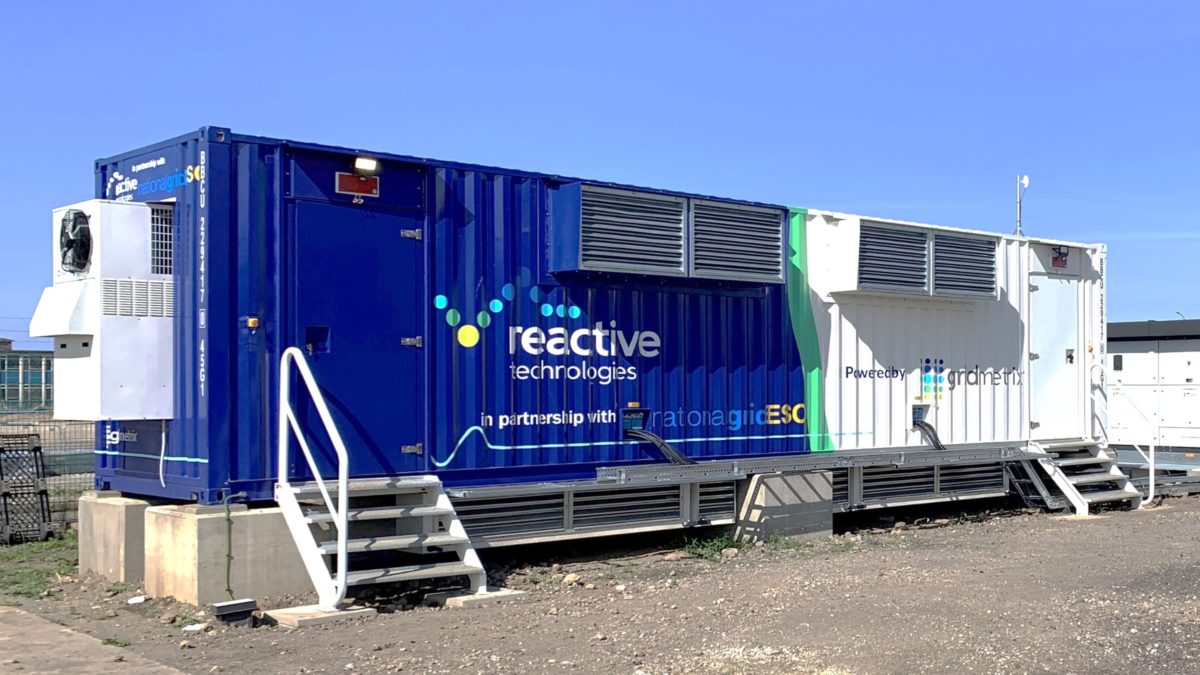Reactive Technologies is expanding into the United States, and has recently won recognition from BloombergNEF as one of its 2022 Pioneers. In late 2021 they connected their first unit to the UK grid. The company describes its technology as “sonar for the power grid”.
Reactive starts by installing a shipping container full of gear that sits behind an ultracapacitor. This grid connected unit injects small, specific, bursts of energy — signals one might call them — into the power grid. The company listens to how the signals are distorted using in-house designed ‘measurement units’ strategically located on the grid.

The company’s Grid-Sonar software suite then collects the distortion data, and calculates the power grid’s system inertia, as well as other parameters. This information is then delivered to the grid operator’s management platforms so they can more discretely deploy grid supporting resources, and avoid turning on an entire coal plant to service a ‘tiny wobble’ that could be fixed with a much smaller and faster battery.
The company connected their first unit to the grid in the United Kingdom to support National Grid in October of 2021. In general, National Grid has been active in the budding “green inertia” space.
Grid stability is becoming a greater concern for operators in many markets as we transition into this brave new world. Recent events in California and Texas, which affected solar power generation heavily, bring this topic into even greater focus.
Solar-plus-storage has been running large off-grid solar power projects for decades, providing ample evidence that full size power grids could be run by the same technology.
Sonnen first made whole communities capable of going off-grid over a decade ago in Europe, and since 2017 in the United States. First Solar also proved its ability to provide grid forming services from modules in 2017. With ongoing inverter research, the full suite of solar gear (modules, inverters, and batteries) will be ready to run the grid very soon.
AEMO, the manager of Australia’s heavily renewable energy power grid, is investing significant time into solar inverters and batteries doing this work. The Philippines recently installed its first grid stability battery. The US’ PJM region also has a lot of energy storage grid services experience.

Keeping close to what we already understand, four ‘synchronous condensers’ were installed on Australia’s grid, allowing for more than a gigawatt of wind and solar to and avoid frequent curtailment, and to be almost fully utilized. These were the first units installed in the very advanced Australian renewables marketplace.
Synchronous condensers are very large metal flywheels that spin at 50 or 60 revolutions per minute, stabilizing the electromagnetic fields of the grid. These units are powered by electricity, rather than the steam from burning gas or coal. The hardware has been around for many decades, but is not needed on fossil heavy grids, since fossil generators already have spinning resources built in.

The large infrastructure investment firm, Quinbrook, recently installed the first synchronous condenser in the UK. Additional units will be deployed at three more UK sites this summer.
This content is protected by copyright and may not be reused. If you want to cooperate with us and would like to reuse some of our content, please contact: editors@pv-magazine.com.








By submitting this form you agree to pv magazine using your data for the purposes of publishing your comment.
Your personal data will only be disclosed or otherwise transmitted to third parties for the purposes of spam filtering or if this is necessary for technical maintenance of the website. Any other transfer to third parties will not take place unless this is justified on the basis of applicable data protection regulations or if pv magazine is legally obliged to do so.
You may revoke this consent at any time with effect for the future, in which case your personal data will be deleted immediately. Otherwise, your data will be deleted if pv magazine has processed your request or the purpose of data storage is fulfilled.
Further information on data privacy can be found in our Data Protection Policy.